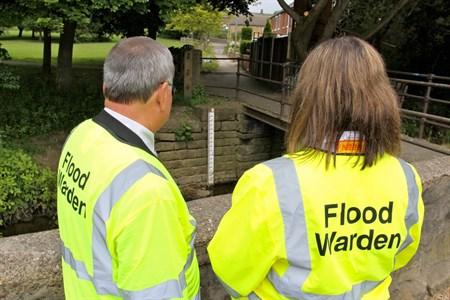Flooding
In an emergency: if your property is flooding, you need rescuing and there is a risk to life, call 999 and ask for fire.
Protecting your home
What to do if there is a flood
Please go to the government guidance on what to do before or during a flood including how to report one, pumping out water, and more.
In an emergency: if your property is flooding, you need rescuing and there is a risk to life, call 999 and ask for fire.
Be prepared
The government also provide helpful information on flooding and how to check for flooding. This includes current flood warnings or alerts, what the flood risk is for the next 5 days, and flooding that may be due to rainfall, river, sea or groundwater levels. You can also ...
- sign up to the government Floodline to receive alerts by phone, email or text message. You can also contact the Floodline helpline on 0345 988 1188 24 hours a day, 7 days a week (learn about call charges)
- check if you and your home are at risk by going to the government flood alerts and warnings
- create a personal flood plan.
After a flood
Follow the government guidance on what to do after a flood, including who to contact, clearing up and food and water safety.

Always remember
- listen to and follow the advice of the emergency services, and evacuate if they advise you to.
- try following Kent’s emergency services, the Environment Agency, and your local councils on social media to make sure you’re connected.
- check with vulnerable neighbours or relatives. If they are at risk of flooding, contact them to make sure they are prepared and know what to do should their home flood.
Driving or walking in floodwater
When driving
Never attempt to drive through flooded roads or fords. Water is often deeper than it looks and may be moving quite fast. Your vehicle may become stranded or be swept away and there may be hazards under the water.
Avoid travelling in heavy rainstorms unless absolutely necessary. If heavy rain makes visibility difficult, pull over if possible, remembering that roads will be slippery during wet conditions.
When walking
Never attempt to walk through flooded areas.
Even shallow water moving fast can sweep you off your feet and there may be hidden dangers such as open drains or damaged road surfaces, which can cause serious injuries or even death.
Floods caused by burst water mains, sewers, drains and other sources
- if your home suffers from a burst water pipe, try to turn off your water supply immediately if you can, then call for a plumber.
- different organisations will be responsible for/deal with different types of flooding. See who you should contact.
- find the details of your local council if you need to contact them.
- further useful information can be found in The Environment Agency booklet ‘What to do before, during and after a flood – Practical advice on what to do to protect yourself and your property’.